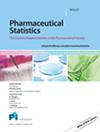Tree-temporal scan statistics for safety signal detection in vaccine clinical trials
IF 1.3
4区 医学
Q4 PHARMACOLOGY & PHARMACY
引用次数: 0
Abstract
The evaluation of safety is critical in all clinical trials. However, the quantitative analysis of safety data in clinical trials poses statistical difficulties because of multiple potentially overlapping endpoints. Tree-temporal scan statistic approaches address this issue and have been widely employed in other data sources, but not to date in clinical trials. We evaluated the performance of three complementary scan statistical methods for routine quantitative safety signal detection: the self-controlled tree-temporal scan (SCTTS), a tree-temporal scan based on group comparison (BGTTS), and a log-rank based tree-temporal scan (LgRTTS). Each method was evaluated using data from two phase III clinical trials, and simulated data (simulation study). In the case study, the reference set was adverse events (AEs) in the Reference Safety Information of the evaluated vaccine. The SCTTS method had higher sensitivity than other methods, and after dose 1 detected 80 true positives (TP) with a positive predictive value (PPV) of 60%. The LgRTTS detected 49 TPs with 69% PPV. The BGTTS had 90% of PPV with 38 TPs. In the simulation study, with simulated reference sets of AEs, the SCTTS method had good sensitivity to detect transient effects. The LgRTTS method showed the best performance for the detection of persistent effects, with high sensitivity and expected probability of type I error. These three methods provide complementary approaches to safety signal detection in clinical trials or across clinical development programmes. All three methods formally adjust for multiple testing of large numbers of overlapping endpoints without being excessively conservative.用于疫苗临床试验安全信号检测的树状时序扫描统计
安全性评估在所有临床试验中都至关重要。然而,由于存在多个可能重叠的终点,临床试验中安全性数据的定量分析在统计学上存在困难。树状时空扫描统计方法可以解决这一问题,并已广泛应用于其他数据源,但迄今为止尚未应用于临床试验。我们评估了用于常规定量安全信号检测的三种互补扫描统计方法的性能:自控树状时空扫描(SCTTS)、基于组间比较的树状时空扫描(BGTTS)和基于对数秩的树状时空扫描(LgRTTS)。每种方法都使用两项 III 期临床试验的数据和模拟数据(模拟研究)进行了评估。在案例研究中,参考集是被评估疫苗的参考安全信息中的不良事件(AEs)。SCTTS 方法的灵敏度高于其他方法,在剂量 1 后检测出 80 个真阳性 (TP),阳性预测值 (PPV) 为 60%。LgRTTS 检测出 49 个 TP,PPV 为 69%。BGTTS 检测出 38 个 TP,PPV 为 90%。在模拟研究中,利用模拟的 AEs 参考集,SCTTS 方法在检测瞬时效应方面具有良好的灵敏度。LgRTTS 方法在检测持续效应方面表现最佳,灵敏度高,预期 I 型错误概率也高。这三种方法为临床试验或整个临床开发计划中的安全信号检测提供了互补方法。这三种方法都能对大量重叠终点的多重测试进行正式调整,而不会过于保守。
本文章由计算机程序翻译,如有差异,请以英文原文为准。
求助全文
约1分钟内获得全文
求助全文
来源期刊

Pharmaceutical Statistics
医学-统计学与概率论
CiteScore
2.70
自引率
6.70%
发文量
90
审稿时长
6-12 weeks
期刊介绍:
Pharmaceutical Statistics is an industry-led initiative, tackling real problems in statistical applications. The Journal publishes papers that share experiences in the practical application of statistics within the pharmaceutical industry. It covers all aspects of pharmaceutical statistical applications from discovery, through pre-clinical development, clinical development, post-marketing surveillance, consumer health, production, epidemiology, and health economics.
The Journal is both international and multidisciplinary. It includes high quality practical papers, case studies and review papers.
 求助内容:
求助内容: 应助结果提醒方式:
应助结果提醒方式:


